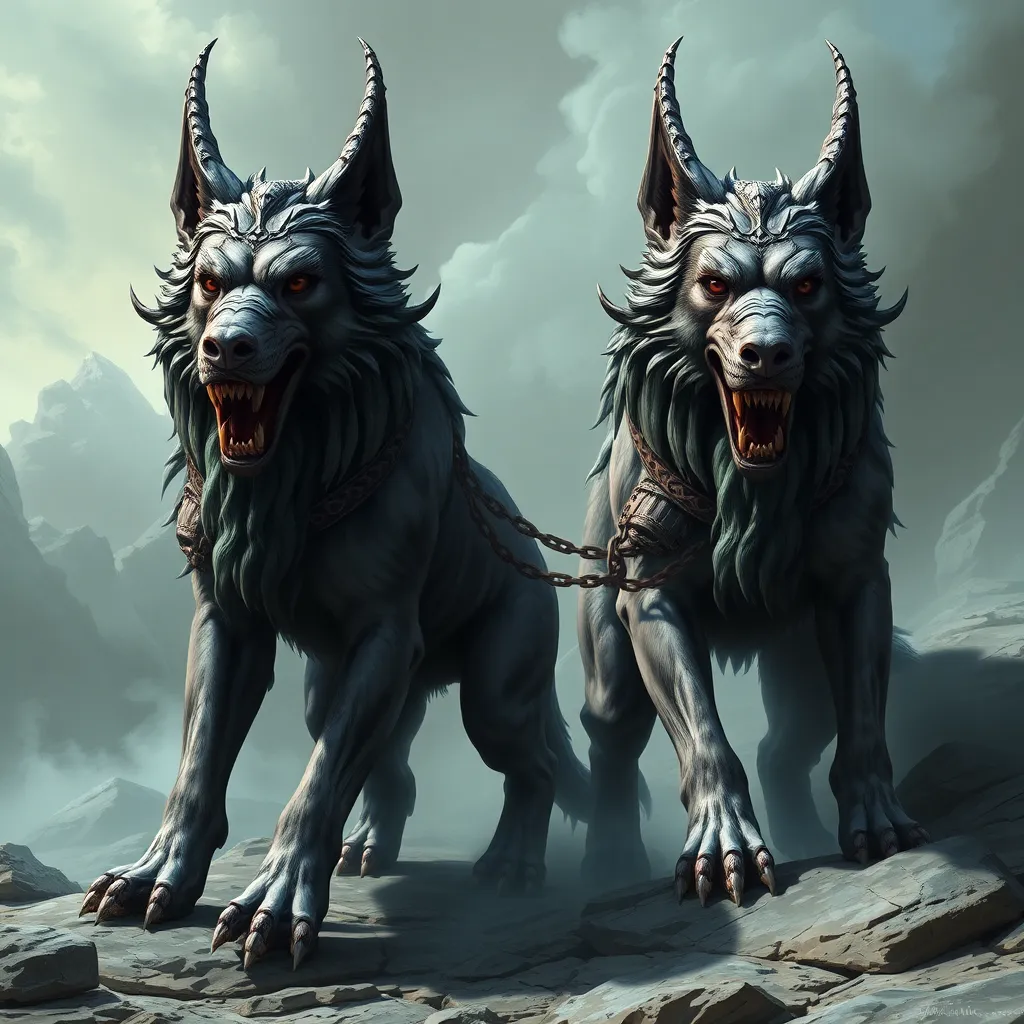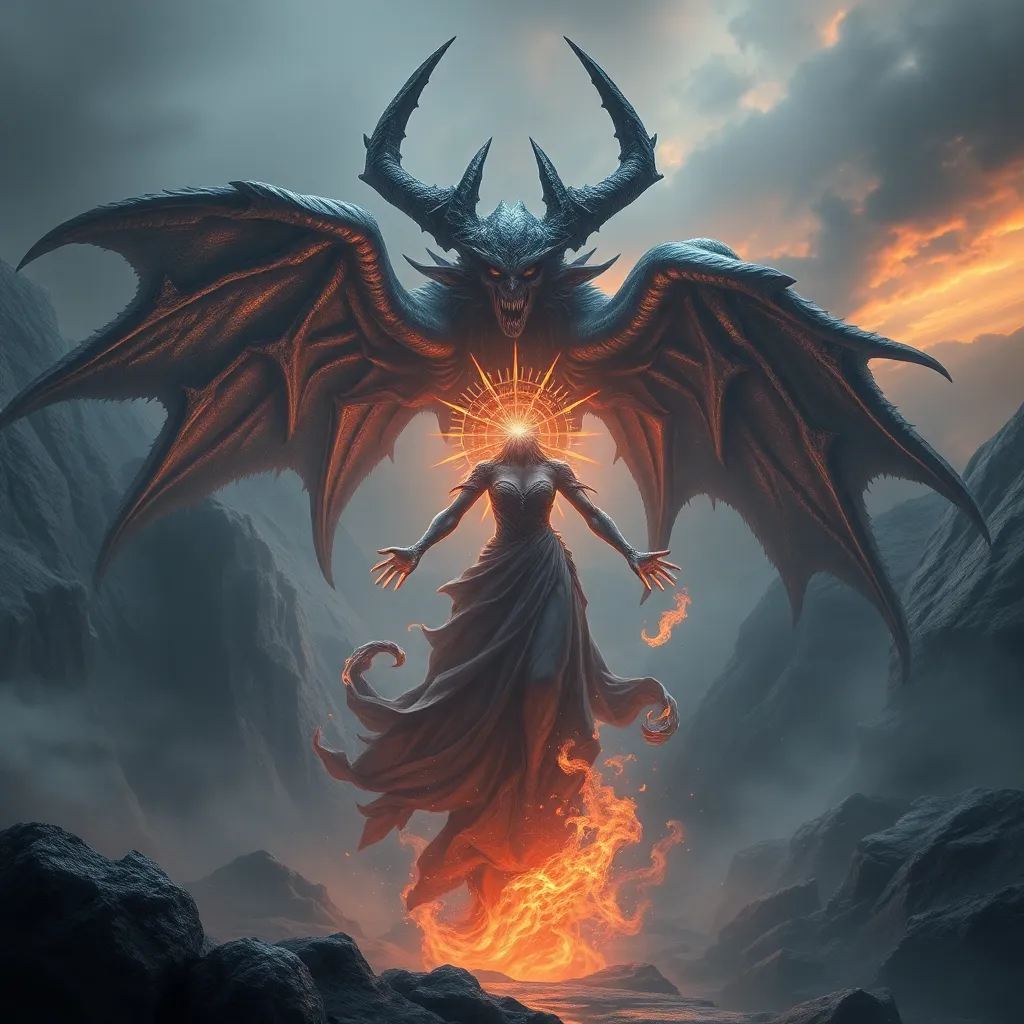Cerberus in Norse Mythology: Connecting the Underworld Guard to the Realm of the Dead
I. Introduction
Cerberus, the three-headed dog from Greek mythology, is often depicted as the fierce guardian of the Underworld, preventing the dead from escaping and the living from entering without permission. Originating from ancient Greek beliefs, Cerberus is a symbol of the boundary between life and death.
Norse mythology, on the other hand, presents a unique perspective on the afterlife, featuring various realms and deities that govern the fate of souls. Among these, Hel, ruled by the goddess Hel, serves as the primary realm for the deceased who did not die in battle.
This article aims to explore the connections between Cerberus and the Norse underworld, highlighting the similarities and cultural exchanges between these mythological traditions.
II. Cerberus: The Guardian of the Greek Underworld
Cerberus is described as a monstrous creature with three heads, a serpent’s tail, and a body covered in fur made of snakes. His primary role in Greek mythology is to guard the gates of the Underworld, ensuring that the dead remain within its confines.
The significance of Cerberus extends beyond his fearsome appearance; he embodies the themes of protection and the inevitability of death. His presence at the gates of Hades symbolizes the transition from life to the afterlife, acting as a reminder of mortality.
Comparatively, other mythological creatures serve similar functions:
- Orthrus, a two-headed dog also from Greek mythology.
- Fenrir, a monstrous wolf in Norse mythology, tied to the end of the world.
- Garmr, a hound associated with guarding Hel’s gates in Norse beliefs.
III. The Norse Underworld: Hel and Its Significance
Norse cosmology presents a complex view of the universe, divided into nine realms, with Hel being one of the most significant. Hel is not simply a place of punishment; it is a realm for those who did not die a heroic death, including the elderly and the sick.
Hel, the goddess who rules this realm, is depicted as half alive and half dead, symbolizing the duality of existence. The inhabitants of Hel are significant in understanding Norse beliefs about life, death, and the afterlife.
The beings within Hel, including the souls of the deceased, serve various roles, contributing to the understanding of fate and destiny in Norse culture. Their experiences reflect the values and beliefs of the society regarding honor, bravery, and the afterlife.
IV. Similarities Between Cerberus and Norse Underworld Guardians
A comparative analysis reveals intriguing similarities between Cerberus and Norse guardians, particularly Garmr, who is often depicted as a fierce dog guarding the entrance to Hel. Both creatures serve as protectors of the boundary between life and death.
The thematic connections between these figures encompass:
- Protection: Both Cerberus and Garmr are tasked with guarding their respective realms.
- Death: Each creature symbolizes the finality of death and the passage of souls.
- The Afterlife: They are central to their mythologies’ perceptions of what lies beyond death.
The significance of these guardians in their respective mythologies underscores the universal themes of mortality and the afterlife, illustrating how cultures utilize similar archetypes to convey profound truths about existence.
V. Cerberus’ Influence on Norse Mythology
The influence of Greek mythology on Norse beliefs is a subject of scholarly interest, particularly regarding the narrative parallels between figures like Cerberus and the Norse hounds. The exchange of mythological ideas across cultures often results from trade, conquest, and storytelling.
Possible narrative parallels include:
- The role of guardianship and protection in both mythologies.
- Similar tales of heroism involving encounters with these creatures.
- Shared themes of loyalty and companionship associated with dogs.
This intermingling of mythological figures illustrates the fluidity of cultural narratives and the ways in which societies interpret and adapt ideas from one another.
VI. The Role of Dogs in Mythology
Dogs have held significant symbolism across various mythologies, including both Norse and Greek traditions. In these cultures, dogs often represent loyalty, protection, and the connection between the living and the dead.
In relation to death and the afterlife, dogs are frequently seen as guides or guardians:
- Cerberus: As the guardian of Hades, he prevents the living from trespassing into the realm of the dead.
- Garmr: In Norse mythology, he is associated with the end of the world and guards the entrance to Hel.
Both Cerberus and Norse dogs reflect cultural values surrounding death, serving as symbols of the complex relationship humans have with mortality and the afterlife.
VII. Modern Interpretations and Cultural Legacy
The figures of Cerberus and Norse mythology have transcended their origins, finding new life in contemporary literature and media. These mythological creatures continue to captivate audiences, appearing in various forms such as:
- Films and television shows that reinterpret ancient myths.
- Books and graphic novels that blend mythological themes with modern storytelling.
- Video games that feature mythological elements and characters.
The ongoing fascination with these figures highlights their adaptability and relevance, influencing modern understandings of death and the afterlife. They serve as reminders of the rich tapestry of human experience and the universal questions surrounding mortality.
VIII. Conclusion
In conclusion, the connections between Cerberus and Norse mythology reveal a fascinating interplay of cultural beliefs about the afterlife and guardianship. By examining the similarities between Cerberus and Norse underworld guardians like Garmr, we gain insight into the shared themes of protection, death, and existence that transcend individual mythologies.
The study of mythological figures across cultures is essential for understanding how societies interpret the human experience. Cerberus and Norse guardians symbolize the enduring legacy of mythology, reminding us of the timeless questions that continue to resonate through the ages.



